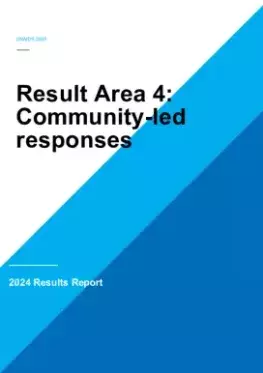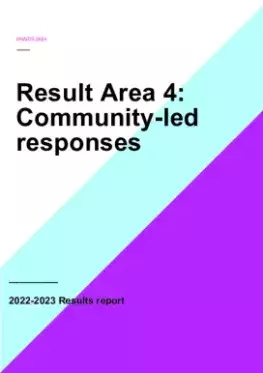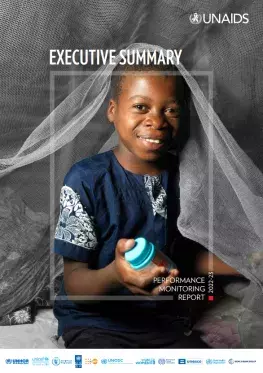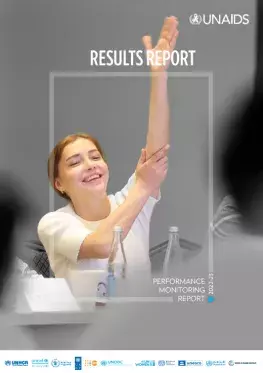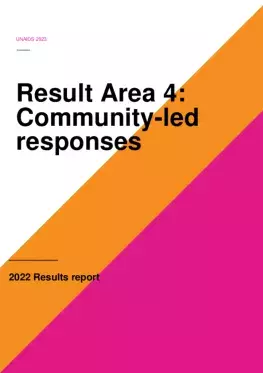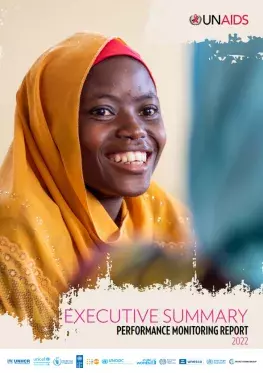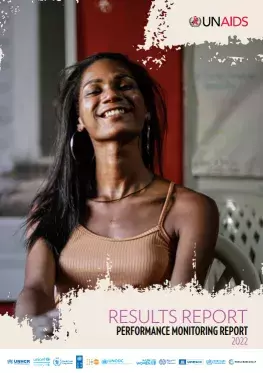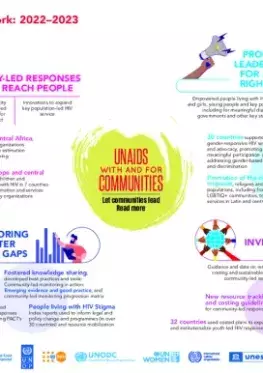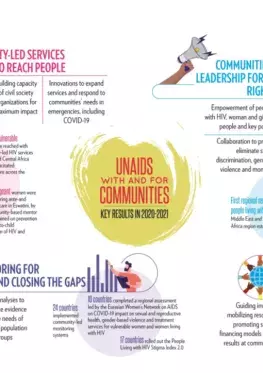Stronger community-led HIV responses and empowered, enabled and effectively resourced communities to lead HIV service delivery, advocate for and enjoy their right to health, and removal of social and structural drivers of the HIV epidemic has remained a key priority of the Joint Programme in 2024. This included support for community-led HIV response expansion and community-led HIV organizations in over 70 countries especially for advocacy, monitoring, decision making.
In close collaboration with affected communities and building on recent guidance, new evidence, progress and their experience, the Joint Programme issued new normative guidance and tools to advance community-led HIV responses. These focus on monitoring of progress and targets, enabling policy environment and the costing of and resources mobilization for their sustainable financing. A new framework and methodology for monitoring progress towards the 30–80–60 targets in the Global AIDS Strategy is also available. Thanks to UNAIDS data collection and reviews, new analyses of the community‐led response data collected through the National Commitments and Policy Instrument yielded valuable insights about the operating environments, which can guide further action for achieving the 30–80–60 targets.
A global community of practice led by the Secretariat supported communication and knowledge-sharing about community-led monitoring among practitioners. In 41 countries, community-led monitoring benefited from dedicated technical support from the Secretariat, including the development of a regional roadmap and country action plans on community-led monitoring in 13 countries in western and central Africa. As part of the development of the new global AIDS targets for the next Global AIDS Strategy 2026–2031, technical guidance developed by the Secretariat helped inform the global community-led monitoring targets.
The Joint Programme’s advocacy and technical support also contributed to the incorporation and expansion of community-led responses in national HIV responses (including policies, planning, budgeting and reporting). It continued to support networks of people living with HIV to produce and promote the use of Stigma Index. Thanks to the Global Network of People Living with HIV, the International Community of Women Living with HIV, the UNAIDS Secretariat and other partners, People Living with HIV-led Stigma Index reports were finalized and launched in 10 countries in 2024. This evidence is critical and used for programming and resources mobilization. Through its partnership with Robert Carr Fund––a unique international pooled funding mechanism that invests in global and regional community-led and civil society networks––the Joint Programme empowered and support global and regional networks of people living with HIV and key populations.
In 2024, efforts to promote more sustainable community-led responses especially the financing of innovative approaches intensified. UNICEF published a US$ 10 million investment case for donors to scale up peer and community models to improve HIV and maternal and child health outcomes such as peer mentor programmes to increase safe motherhood and reduce vertical HIV transmission among young pregnant women.


